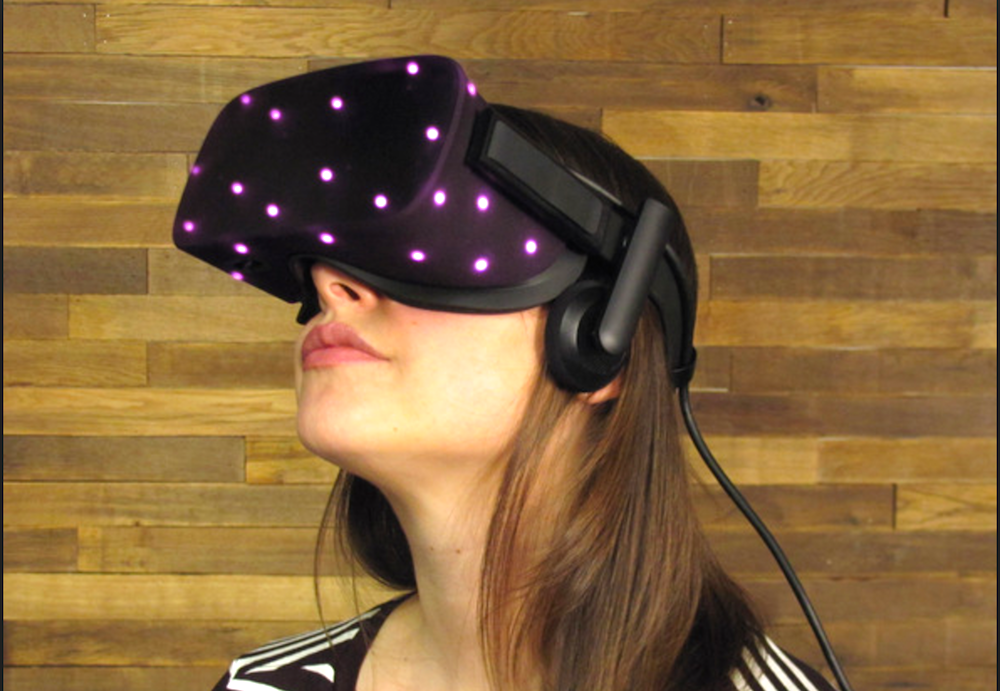Tracking systems
‘Constellation’ (Original Oculus Rift)
When designing the Rift, Oculus faced the challenge of delivering the same quality of tracking as multi-thousand dollar systems like OptiTrack at orders of magnitude lower cost.

Each tracked device has a pre-defined “constellation” of infrared LEDs hidden under the external plastic, which you can see highlighted in the image above. IR light is invisible to the human eye.
Sensors, which are basically cameras with filters to see only IR light, send frames to the user’s PC over a USB cable at 60 Hz. The PC processes each frame, identifying the position of each IR LED, and thus the relative position of each object.
The software can easily recognize which LEDs it’s seeing because it knows the shape of the “constellation”, it remembers where the object was in the previous frame, and it knows its direction of acceleration (from the accelerometer), and its rotation (from the gyroscope). Each IR LED also blinks at a specific frequency to identify itself. These innovations gave Constellation a leg up over past marker-based tracking systems.
To support fast motion, the Rift headset and Touch controllers wirelessly communicate with a wireless chip in the sensor every time they’re about to pulse their LEDs. This allows the camera shutter to fire exactly as the LEDs do, and allows the exposure to be short.

Above: Oculus Rift S
Constellation tracking is no longer used for headset tracking for the Rift S or Oculus Quest, but it is used on the headset onboard cameras to track the controllers.
Constellation advantages:
- Low cost to integrate
- High quality tracking
- Works in most environments
Constellation disadvantages:
- Each sensor has wired connection to PC
- Large USB bandwidth causes issues with many motherboards
- Sensors have limited vertical field of view
